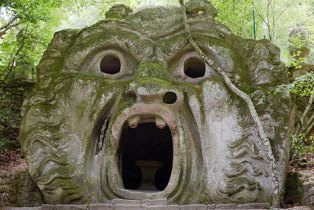
WTI Magazine #28 2014 May, 1
Author : Enrico De Iulis Translation by:
Lazio often falls into a very widespread misconception in the collective imagination: many people think of it as if would completely correspond to Rome, as if the capital of Italy was expanding to cover the rest of the region or even if the territory around Rome would become indefinite approximation, as no of interest. The reality is exactly the opposite of this common mistake.
Exactly because it is close to Rome, Lazio hides centuries of really memorable accumulated art, and special places that seem to lose their power just because they are too close to the epicenter of the largest art and beauty in the world. The history of the Popes and of the great Roman families obviously have a responsibility to have graced and recreated dozens of small towns in Lazio, that were actual estates of agricultural production and the first support for the luxurious life of the wealthy and noble Roman.
As we have already had the occasion to describe the Palazzo Farnese in Caprarola, this week another country of northern Lazio attracts our interest: Bomarzo. Even this town, like most of the province of Viterbo, has Etruscan and Roman origins traceable to the old "Pomarthyum", and had a thriving expansion so as to merit even a bishopric, and since the early middle ages it remained closely linked to the fate of the Orsini family, one of the most ancient families of Rome.
In the sixteenth century, the whole area suffered an enormous production and artistic boost, because both the Orsini and the Farnese are firmly in the orbit of the papal ring with at least a couple of members for each family: this has an impact especially on the level of prestige of the families which tend to magnify themselves and their possessions embellishing history, palaces and churches through much sought and complex decorations.
So, between 1549 and 1552, in Bomarzo, after being released from an imprisonment of war, Vicino Orsini oders Pirro Ligorio to design the "Sacro Bosco" (Sacred Forest), that will become known to all as "Il parco dei mostri" (The Monster Park).
This site has a number of unique features that even still today do not allow an unambiguous and definitive explanation of the meaning of the works contained within it. It is a garden, seemingly natural and not Italian as are those of the neighboring villas Bagnaia, Tivoli or the gardens of the Palazzo Farnese in Caprarola: but inside a series of sculptures, faux architecture, open air theaters, jokes and amazing scenery, leave the visitor stunned.
Many have tried to give an explanation involving an alchemical interpretation, or a path of soul purification, but no one has really ever been able to find the source of inspiration of the figures, and so the mystery is yet to be revealed. It contains a leaning house, a mermaid, various depictions of the Olympian gods, an ogre by whose mouth you can walk into a room carved in the rocks, a temple, a fight scene between a dragon and a lion, an elephant with a tower on its back, a turtle on a whale and much more.
It is really a magical place that even after centuries has not lost its aura: among the places typical of the renaissance, one of the most important of the central Italy.



